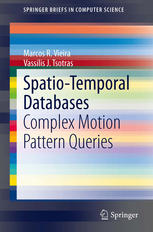

Most ebook files are in PDF format, so you can easily read them using various software such as Foxit Reader or directly on the Google Chrome browser.
Some ebook files are released by publishers in other formats such as .awz, .mobi, .epub, .fb2, etc. You may need to install specific software to read these formats on mobile/PC, such as Calibre.
Please read the tutorial at this link: https://ebookbell.com/faq
We offer FREE conversion to the popular formats you request; however, this may take some time. Therefore, right after payment, please email us, and we will try to provide the service as quickly as possible.
For some exceptional file formats or broken links (if any), please refrain from opening any disputes. Instead, email us first, and we will try to assist within a maximum of 6 hours.
EbookBell Team

4.8
74 reviewsThis brief presents several new query processing techniques, called complex motion pattern queries, specifically designed for very large spatio-temporal databases of moving objects. The brief begins with the definition of flexible pattern queries, which are powerful because of the integration of variables and motion patterns. This is followed by a summary of the expressive power of patterns and flexibility of pattern queries. The brief then present the Spatio-Temporal Pattern System (STPS) and density-based pattern queries. STPS databases contain millions of records with information about mobile phone calls and are designed around cellular towers and places of interest. Density-based pattern queries capture the aggregate behavior of trajectories as groups. Several evaluation algorithms are presented for finding groups of trajectories that move together in space and time, i.e. within a predefined distance to each other. Finally, the brief describes a generic framework, called DivDB, for diversifying query results. Two new evaluation methods, as well as several existing ones, are described and tested in the proposed DivDB framework. The efficiency and effectiveness of all the proposed complex motion pattern queries are demonstrated through an extensive experimental evaluation using real and synthetic spatio-temporal databases. This clear evaluation of new query processing techniques makes Spatio-Temporal Database a valuable resource for professionals and researchers studying databases, data mining, and pattern recognition.